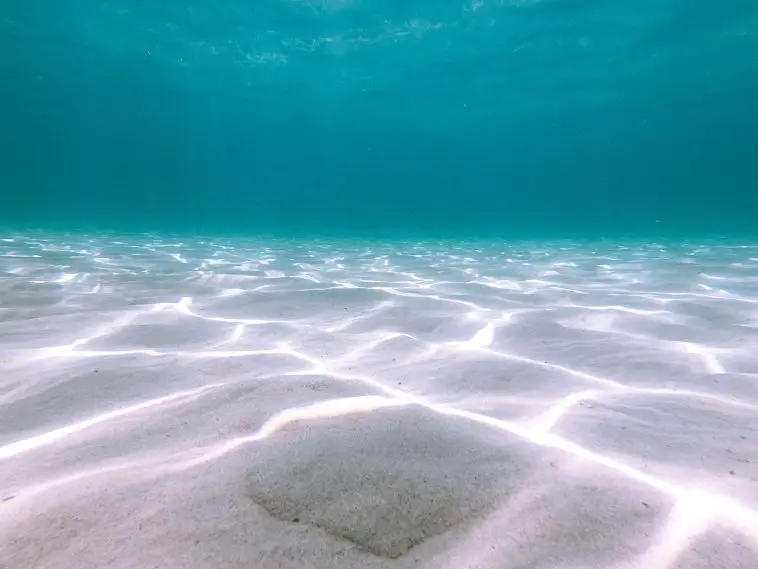Are you fascinated by the idea of becoming an underwater welder? The thought of working in the depths of the unknown might seem appealing, but what are the dangers associated with this type of work? With great rewards come great risks and being an underwater welder is no exception. In this article, we will explore the potential hazards of a career as an underwater welder and answer one pressing question: What is the death rate for these brave souls who take on such a dangerous job?
Page Contents
What is Underwater Welding?
Underwater welding is a specialized form of welding that takes place beneath the surface of water. It involves using an electric arc welder to join metal components together in a submerged environment, usually under pressure and often at depths up to 250 feet below sea level. The welds are made with consumable electrodes or non-consumable tungsten electrodes and can be used on ferrous and non-ferrous materials alike.
The process has been around since the mid 19th century, but it has only recently become more popular due to its many advantages over traditional dry welding processes, such as being able to make repairs quickly underwater or in other areas that would otherwise be difficult for workers on land. By utilizing this method, engineers are able to work faster than ever before while ensuring quality results that withstand extreme conditions like saltwater corrosion or high temperatures from deep oceanic environments.
Underwater welders need special training in order to be successful at their job; they must understand how different metals react when exposed to water as well as how certain electrical currents will affect the welding process itself. In addition, these professionals must also know about safety protocols specific for working under water including breathing apparatus use and proper buoyancy control measures. Many companies now offer certification courses for those who wish to pursue a career in underwater welding so they can receive the knowledge necessary for success out of any situation they may encounter during their jobs.
Health Risks of Underwater Welding
Underwater welding is a dangerous job, and it brings with it many potential health risks. The most common of these hazards are exposure to extreme pressure, toxic gases, electric shock and ultraviolet radiation.
Working under high pressures can lead to decompression sickness or “the bends” which occurs when nitrogen bubbles form in the body due to rapid changes in pressure. Symptoms include joint pain, confusion and paralysis. Prolonged exposure can also cause nitrogen narcosis – a state similar to being drunk where judgement is impaired; this further increases the risk of accidents occurring underwater.
Toxic fumes from welding processes such as carbon monoxide can be especially hazardous if inhaled while submerged at depth because they have no chance of dispersing and oxygen levels may be lower than on land . Electric shocks are an ever present danger for welders working underwater; even small shocks can cause serious injury or death through cardiac arrest or drowning. Lastly there is the risk posed by intense UV light produced by arc welding torches; this type of light penetrates skin more deeply than normal sunlight leading to increased risk of burns and skin cancer over time.
To mitigate these dangers experienced divers must undergo extensive safety training before attempting any kind of underwater work . They must learn how use specialised equipment safely including: dry suits , helmets , communication systems , thermal protection layers , cutting tools that don’t spark electricity and respirators designed specifically for use in deep water environments . With all these precautions taken properly, underwater welders should have relatively low exposure to health risks associated with their work but vigilance is still essential as accidents do happen!
Underwater Welder Death Rate Statistics
The world of underwater welding is an incredibly dangerous one. With the combination of extreme depths, man-made hazards, and the ever-present danger of drowning, it’s no wonder that this job has a higher death rate than many other professions. Unfortunately, due to its nature as a specialized trade with limited numbers employed at any given time, there are few reliable statistics available about the death rates for underwater welders.
However, based on what information is available from sources such as the National Institute for Occupational Safety and Health (NIOSH), we can get some idea of how hazardous this profession really is:
• The fatality rate in commercial diving stands at 22 fatalities per 100 000 workers over a 10 year period – this number only increases when you factor in those who work outside regulated waters or lack safety measures.
• According to NIOSH’s estimates up to 16% of all fatal occupational accidents involve water related activities – making it one of the most dangerous areas to work in terms of fatalities.
• Additionally research indicates that around 17%of all deaths among divers during 2015 were attributed to drowning – making it by far the biggest cause amongst their ranks. This number rises even further when you consider that not all drownings are reported accurately or registered correctly.
In conclusion then while exact figures may be hard to come by due to limited data sets and different definitions across industries – what we do know suggests that working as an underwater welder carries significant risks and should never be taken lightly!
Causes of Death in the Underwater Welding Industry
The underwater welding industry is a dangerous one, as welders have to work in extreme environmental conditions and are constantly exposed to hazardous materials. As such, the death rate among workers in this field is alarmingly high. Many of these deaths can be attributed to drowning, exposure to toxic gases or electric shock.
Drowning is perhaps the most common cause of death in underwater welding. With no oxygen available at great depths for long periods of time, it’s not uncommon for divers to become disoriented and lose consciousness due to lack of air pressure. Additionally, when welders get too close to hot metals or electrical currents during their work they may accidentally fall into deep waters without realizing it until it’s too late. Moreover, if faulty equipment fails during a dive then the diver could suffer fatal consequences before help arrives on the scene.
Exposure to toxic gases also presents an ever-present danger while working underwater with welding tools and materials that release hazardous fumes and vapors into the atmosphere surrounding them – including carbon dioxide (CO2), nitrogen oxide (NOx) and sulfur dioxide (SO2). These substances can cause severe respiratory problems which lead directly or indirectly by suffocation or other means leading ultimately towards death if not treated properly on time. Furthermore, any person who inhales large amounts of these toxins will experience dizziness, nausea and/or confusion which can further endanger their safety as they operate power tools under water without proper protection from gas masks or respirators .
Finally electric shock is another major hazard for those involved in underwater welding since electricity mixed with saltwater creates a deadly combination that could easily result in electrocution even at low voltage levels when contact with metal objects occurs beneath waves’ surface . Any contact between an energized conductor like wires ,cables etc.,and a grounded body part like hands ,arms etc.,can spell instant disaster if safety measures aren’t taken seriously enough beforehand .
Preventative Safety Measures for Underwater Welders
Underwater welding is an exciting and rewarding career, but it also comes with certain risks. To minimize the potential for injury and ensure the safety of underwater welders, preventative measures must be taken to reduce hazardous conditions.
First, a detailed risk assessment should be conducted prior to beginning any project. This includes identifying any hazards that may exist in the environment such as strong currents or marine life which could pose a threat. It’s important to take into account all potential risks before commencing work so that appropriate safety measures can be put in place.
In addition to assessing potential dangers, protective equipment must also be worn while working underwater. A full-face mask or helmet will provide protection against water pressure and contaminants while heavy duty gloves will protect hands from sharp objects or extreme temperatures caused by welding arcs. Additionally, specialized clothing designed specifically for wet environments should always be worn while working below the surface as these garments are lightweight yet durable enough to withstand tough conditions. Finally, divers should carry emergency oxygen tanks just in case they become trapped beneath the surface without access to air bubbles due to unforeseen circumstances like equipment failure or entanglement in debris on the sea floor.
By taking proper precautions and following recommended safety guidelines when performing underwater welding projects, workers can help ensure their own well-being—as well as those around them—and enjoy a successful career doing something they love!
The Impact of Regulations and Certification Requirements
Regulations and certification requirements have a far-reaching effect on businesses of all sizes. It’s important to understand how these regulations can affect your operations and bottom line if you’re running an enterprise. By understanding the impact of regulations, you can be better prepared to navigate the complexities that come with meeting them.
The first way in which regulations have an impact is by setting standards for products or services that must be followed in order to remain compliant with laws or industry best practices. These standards often require companies to invest in additional equipment or personnel training in order to meet them, leading to increased overhead costs and potential delays as staff adjust their working methods accordingly. Additionally, failure to comply with these standards can lead to fines or other penalties from regulatory bodies, further increasing operating expenses for businesses who don’t meet expectations.
Certification requirements also play an important role when it comes to ensuring compliance across various industries. Obtaining certifications such as ISO 9001 demonstrate that a business meets certain quality assurance benchmarks established by the issuing body – this is particularly pertinent for enterprises dealing with sensitive data like healthcare providers who need HIPAA certification from the US Department of Health & Human Services (HHS). Such certifications are not only necessary for legal reasons but they also help build trust between customers and organizations while providing peace of mind that any service they receive will adhere strictly within guidelines set forth by governing bodies around the world.
In conclusion, it’s easy see why regulators and certifications are so vital when it comes operating a successful business; They provide clarity on acceptable practices while helping protect both companies and consumers alike against potential liabilities stemming from negligence or non-compliance issues down the road – something no one wants! Consider taking time out today review current regulations impacting your organization’s operations along with any relevant certification requirements needed maintain lawful operation so you don’t get caught off guard later on!
Preparing to Become an Experienced, Safe Underwater Welder
Becoming an underwater welder is a challenging yet rewarding career choice. It’s important to understand the safety protocols, specialized equipment, and necessary certifications that must be obtained before being hired as an experienced professional. It’s far more than simply jumping in a pool with a welding torch!
First and foremost, it’s essential to obtain certification from the American Welding Society (AWS). This includes having knowledge of welding techniques such as shielded metal arc welding (SMAW), gas tungsten arc welding (GTAW) and flux-cored arc welding (FCAW). A course in underwater cutting may also be beneficial for those interested in this field. Additionally, any potential employer will likely require completion of either the Diver Medic Technician or Hyperbaric Chamber Operator program through Divers Institute International or another similar organization.
In addition to obtaining these certifications, one must have experience with some specialized equipment including full face masks, umbilicals/air hoses which supply air from surface supplied diving systems or self contained underwater breathing apparatus SCUBA systems used for open water welders; wet suits; regulators; depth gauges; weights; buoyancy control devices and so on. Furthermore you should never enter into a deep dive without completing all safety checks prior to immersion – oxygen level analysis kits are often required by employers when working at depths greater than 20 feet below sea level. Finally, much like most other fields related to diver work such as commercial salvage divers it’s highly suggested that you become certified in first aid/CPR as well as basic life support training before attempting any type of job involving deep dives – these skills can prove invaluable if something goes wrong during your time under water!
Wrapping it Up!
Overall, underwater welding is a dangerous yet rewarding field of work. With this being said, it is important to be aware of the potential health risks and safety regulations associated with this job. It is also essential to become certified in order to ensure that you are properly trained for the job. Through understanding these aspects, you can take the necessary steps in preparing yourself for an experienced and safe career as an underwater welder.
Frequently Asked Questions!
Q: What are the risks of being an underwater welder?
A: Underwater welding is highly dangerous work, as it involves working in hazardous conditions with high voltage electricity and extreme depths. Divers face a number of potential hazards such as decompression illness, carbon dioxide poisoning, electric shock, and drowning. As a result, the fatality rate for divers is estimated to be around 40 times higher than that of land-based welders.
Q: Are underwater welders adequately compensated for their risks?
A: Yes. Due to the dangers associated with this type of work, underwater welders typically earn much more than their land-based counterparts. It’s important to note that most employers provide additional benefits such as health insurance and disability coverage to help protect workers from financial hardship if they become injured or ill while on the job.
Q: Are there any safety measures taken by employers when it comes to underwater welding?
A: Absolutely! Employers must comply with OSHA regulations which require them to provide appropriate safety equipment and protective gear for divers including hard hats, buoyancy compensators (BCDs), dive computers/depth gauges/air tanks/regulators etc., specialized gloves designed for cold temperatures or chemical exposure, communication systems between dive teams and surface personnel etc.. Additionally they must ensure proper training programs are in place so that divers are fully aware of safe diving practices.
Q: Is it difficult to obtain certification in underwater welding?
A: Obtaining certification can be a lengthy process depending on your experience level but once certified you will have gained valuable skills necessary for success in this field. To become certified you’ll need access to classroom instruction as well as practical hands-on experience before taking an exam administered by either AWS (American Welding Society) or ADCI (Association Of Diving Contractors International). Generally speaking these certifications demonstrate competency at all levels from beginner up through expert diver status which allows employers confidence when hiring workers who specialize in this occupation.
Q: Can I pursue other career paths after becoming an experienced diver?
A : Depending on your skill set many opportunities exist outside of traditional deep sea welding roles such as commercial diving jobs related oil & gas exploration; marine construction; search & rescue operations; scientific research projects; salvage operations etc.. With years of industry experience under your belt you could even open up shop offering consulting services or start teaching classes yourself!




